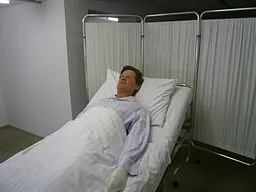
Crash Injures Grass Valley Woman
Crash Injures Grass Valley Woman Crash Injures Grass Valley Woman I’m Ed Smith, a Grass Valley-Nevada City car accident lawyer. A woman from Grass Valley…

Crash Injures Grass Valley Woman Crash Injures Grass Valley Woman I’m Ed Smith, a Grass Valley-Nevada City car accident lawyer. A woman from Grass Valley…

Management of Blunt Trauma Chest Injuries Management of Blunt Trauma Chest Injuries I’m Ed Smith, a Sacramento Chest Trauma Lawyer. Patients who seem clinically stable…

What is Blunt Cardiac Contusion? I’m Ed Smith, a Sacramento Car Crash Lawyer. A blunt cardiac injury or BCI is an injury to the cardiac…

Injuries to the Aorta Most people who sustain a major injury to the aorta during a blunt aortic injury die instantly. Of those who…

Multiple Trauma High-velocity trauma is a major cause of death among those aged 18-44 years of age throughout the world. Many die from blunt trauma…

Breaking a bone is always painful and includes inherent recovery time, but trimalleolar ankle fractures present special challenges – in this post we will look…

With trauma and pregnancy, the trauma has two patients to manage—the mother and the unborn fetus. The various things done in dealing with a pregnant…

By the late 1980s, states in the U.S. began adopting a variety of bicycle helmet laws to improve safety and reduce serious injuries. Studies have…

Something about crane accidents capture the imagination and horror of many. When a tragic crane accident occurs, it is often front page news, perhaps because…

Have you ever wondered who is liable if you get injured while riding a roller coaster? We’ve all seen the dramatic footage of unfortunate thrill…

Seat belts have been perhaps the most important innovation in motor vehicle safety since automobiles were invented. However, even though these devices can greatly improve…

I’m Ed Smith, a Sacramento Personal Injury Lawyer, and over the years, I’ve handled cases for hundreds of clients who sustained a fracture to the…

There is little doubt based on safety studies that vehicle airbags offer protection against severe injuries in automobile collisions; that said, the deployment of airbags…

A blunt spleen injury is one of the most commonly injured organs after an auto accident. It’s caused by a forceful blow to the abdomen….

What are the Different Levels of Trauma Centers? As a Sacramento Personal Injury Lawyer, over the years I’ve been asked what the difference is between…

A study was done looking at two vehicle collisions that included a passenger car and a light truck, defined as a minivan, van, pickup truck…